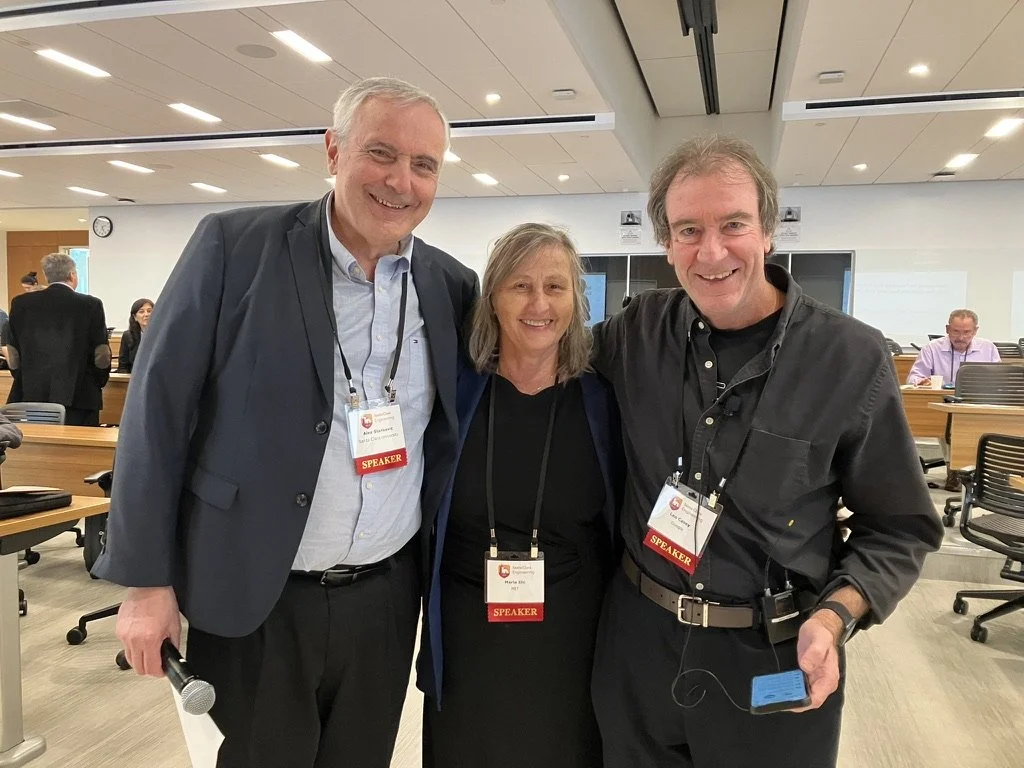Reimagining the Future of the Electric Grid: The Good, the Bad, and the Ugly
Marija Ilic was invited to present her work at Santa Clara University.
Abstract: Rethinking Modeling, Computing and Control for Changing Electricity Service: The Energy dynamics approach
This talk is based on our recently published work [1] which is an outgrowth from at least one decade of active research with several doctoral students at CMU and MIT. The ideas of rethinking how we model, simulate and control complex electric energy systems, with emphasis on formalizing the role of control and computing for supporting resilient, reliable, and cost-efficient decarbonization, are currently also being taught in an MIT EECS course (6.1720/6.1721). Fundamental problems due to slow, inaccurate sensing when tuning controllers against static grid equivalents are illustrated using basic circuits.
In this talk we first review the motivation for this new modeling. Unique features of energy dynamics models derived from the first principles are reviewed, their distributed structure which lends itself to cooperative interactive multi-layered control and computing. The structure supports zooming-in/zooming out modeling into different system layers and it does not require static equivalencing. The structure, when exploited, makes it possible to model interaction dynamics between often highly heterogeneous multi-energy components equipped with controllers designed by different manufacturers (notably, control induced system stability (CISS) already experienced in systems with large penetration of renewables).
We illustrate on microgrids the potential of power electronically implementable nonlinear control design using energy dynamics, with emphasis on reactive power modeling and control. We then pose the problem of end-to-end modeling and control design problems using energy dynamics. We describe how higher-level modeling/control and computing can be posed for provable performance. For this to be done, it is necessary to design next generation primary controllers which have provable performance for ranges of energy, power and rate of change of reactive power. Otherwise, many fast dynamical problems caused by intermittent power fluctuations, large sudden power inputs and topological changes (wind gusts, solar irradiance disturbances, in rush oscillations created by large induction motors/wind power plants connection/disconnection, faults) will remain roadblocks to more efficient flexible utilization of available resources, and the grid ability to support decarbonization.
Finally, we identify in hindsight assumptions currently made when studying and attempting to control frequency and voltage during difficult dynamic conditions. We show that energy dynamics modeling simply represents an outgrowth of today’s Automatic Generation Control (AGC) and Automatic Voltage Control (AVC) when linearization, time scale separation and P-Q decoupling assumptions are relaxed. We suggest that standardized information exchange becomes possible for provable performance of future SCADA in support of otherwise highly complex Dynamic Monitoring and Decision Systems (DyMonDS). At MIT we are developing a Digital Twin based on DyMonDS concepts.
Reference: [1] M. Ilic, M, ``Interaction Variables-based Modelling and Control of Energy Dynamics”, Chapter 12 in Tietjen, Jill S., Marija D. Ilic, Lina Bertling Tjernberg, and Noel N. Schulz (Eds.) "Women in Power." , Springer 2023.
Pictured is Dr. Marija Ilic alongside two former MIT students.

